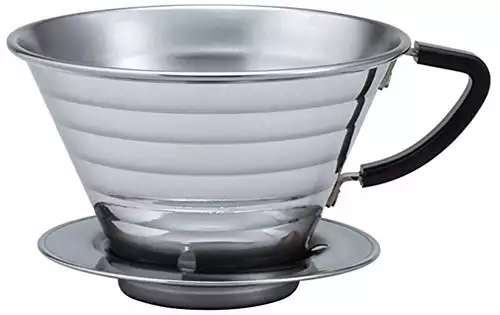Understanding how to brew pour-over coffee only takes a few minutes, and it ensures a tasty cup.
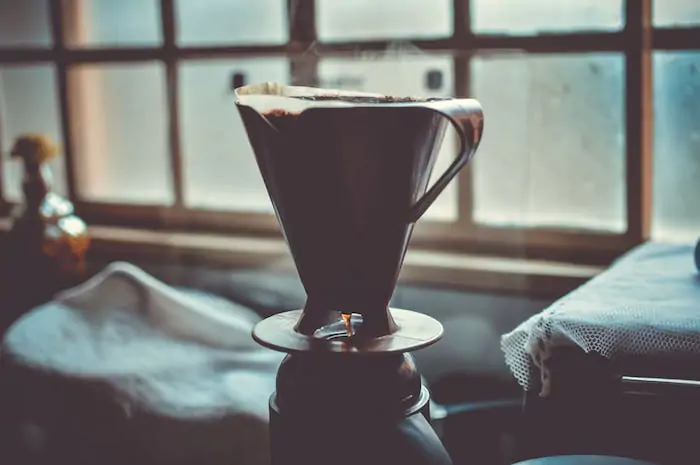
Like so many coffee lovers, I love to have my cup at my favorite coffee shop, but nothing like doing it at home, especially when you are not in the mood to go out and want to relax on your couch, holding dearly to your cup.
Initially, I had the misconception that doing it at home would require expensive equipment, but later I realized that manual brewing is the answer.
I will discuss all that is required to make our coffee bar at home. I will also be talking about some tips that I have learned and ways to perfect the art of making pour-over coffee. It will be worth trying as the first coffee of the day is indeed one of the most important for any coffee lover.
Every day, there is one new coffee brewing gadget available online, making it really hard to choose the best from the available options. So, I feel that it is worth an effort to learn the art of brewing and how the brewing equipment is different from each other.
This way, you will be able to make an informed decision about the apparatus and the brewing methods that will work best to make the coffee that you love.
For the benefit of you guys, I will start with one of the easiest methods of brewing coffee: Pour Over Coffee…
To make a pour-over coffee, we require freshly ground coffee powder and a filter holder with a filter called the pour-over dripper. On a simple tone, pour over coffee requires pouring the hot water over the freshly ground coffee beans, to allow the water to capture the coffee flavors and take it to your cup or the coffee jug.
Looks simple…
Hold on, from my experience, I can assure you that there is much more to making pour-over coffee than it appears.
Doing It At Home
I have detailed below the step-by-step procedure to help beginners to make the best of pour-over coffee. I have mastered this after lots of mistakes, and hope will help you to learn the art earlier than me.
Please note that even with so much detailing, still, it will take the right amount of interest and effort on your part to nail down what is best for you. I suggest that beginners should use a stopwatch to control the process. If you do not have one, check your smartphone, they have one in the clock section.
First, we will need a few basic but important things:
- Pour over coffee maker
- Scale to weigh
- Good quality Coffee filters
- Stopwatch
- Fresh hot water
So, let us go to step-by-step specifics…
Grind the coffee beans to the consistency of raw sugar particles. Now, put the coffee grounds into the pour-over dripper for up to one-half or a maximum of two-thirds. If it is less than that, the water will flow too fast, and if it is too much, it will slow water flow, and the dripper may overflow.
My thumb rule is that for every liter of water, use 60-70 grams (ratio 1:15-17) of the coffee grounds.

Use clean filtered water for the brew. If you intend to pour it directly from the boiling kettle, then do it 30 seconds after boiling. However, if you want to use a pouring kettle, then transfer the boiler water to the saucepan immediately after boiling and then pour.
If using light or medium roast, use about 96°C to 97°C warm water. But if you are using a dark roast, use about 85°C to 90°C hot water.
Wet the coffee bed in pour over the dripper and allow it to soak for about 30 seconds. If some premature dripping happens, no problem, but pour more water only after 30 seconds.
After 30 seconds, gently pour the water again, quickly and evenly, all across the coffee bed. To control the brew time, you can pause for a few seconds in between.
But, while pouring the water, make sure that you control the height. I feel that the lower the pouring height better, as it allows us to have greater control over water flow without agitating the bed too much.
Once the water flow stops, allow the dripper to drip for another 40 to 60 seconds. Allow it as per the depth of taste that you want.
As a thumb rule, the ideal brewing time for a lighter roast is about two and a half to three minutes, and for a darker roast, it is three to four minutes. The above is inclusive of the dripping time after one stops adding water.
If you are not satisfied with the coffee taste, dry grinding the coffee beans finer or increase its roast time. If you find it towards the bitter side, reduce the pouring and brewing time.
Alternatively, use the coarse grinds. I am sure with hit and trial you will get your best balance to suit your taste.
So, there you are…
Through your sermons, be able to master the art of brewing perfect pour-over coffee at home. It will help you through the process, but a lot will depend on your patience and perseverance through the process. Please keep a watch on this space, as I will add more tips to help you with your journey.
There is no best method while brewing your pour-over coffee, and I suggest that one must experiment and try varying brew ratios and ways to get the best taste.
Brewing your coffee is an adventure, a journey through the unknown, and in the end, your own experience through the process will be your best guide, as no one other than yourself knows what is the best.
Why Brewing Pour Over Coffee Is Different
Unlike other methods, in the case of pour-over coffee, new and freshwater continuously replenishes the liquid around the coffee beans. This step helps in producing a fresher and faster brew. But, this method also extracts more flavors from the surface of the coffee beans.
While pouring water, one needs to make sure that it flows in one regular stream, instead of using small streams of water at intervals that can cause a loss of surface temperature.
While making pour-over coffee the heat and water quality, especially the way it gets poured over ground beans, are two main factors that affect the reaction rate and quality of the final product. Hotter, cleaner water gets always preferred for good results.
Making pour over coffee has three main stages: wetting of coffee beans, dissolution of flavors and finally diffusion. These three methods are linked to one other and must be performed correctly for the best results.
Wetting of Coffee!
Wetting is nothing but merely making the dry coffee wet. It looks simple, but an essential phase of coffee making and there are some tricks attached to it. When we roast coffee, one primary product of the process is CO2 which gets trapped in the surface of baked beans.
The lighter the bake the more will be trapped CO2 in the bean surface. Darker roasting will release the trapped CO2 more. When we put water on coffee, this trapped CO2 does not allow the water to seep into the bean powder.
That is why I always prefer the dark roasting of coffee beans. This step enables better coffee water contact and more exceptional coffee taste in your cup. This is not all.
I have one more tip here. I initially add enough hot water just to wet the grounds and then allow it to bloom for 30 seconds. This way the trapped gas gets removed.
After that, I pour the remaining water over the beans. I find that the taste of the final product is always better through this method.
Dissolution of Coffee
The name dissolution indicates dissolving the solubles in the coffee bean cells through the hot water as it gets poured over the grounds. But if we want to have a tasty brew, then we must stop the brewing at the right moment. Why is it so?
It is because, in coffee, there are both useful and harmful substances. But, luckily the good chemicals get easily dissolved in hot water, leaving behind the unpalatable ones. I suggest that you guys make sure to pour boiling water of the right temperature for the right time to get the best taste of the final brew.
Diffusion of Coffee
Diffusion involves taking out the useful solubles in coffee beans via Osmosis. As the cell walls of the coffee grounds are made of semi-permeable membranes, so through osmosis surface pressure drives out the desirable ingredients and solubles out into your cup of coffee.
Timing and Adjustments of Brewing
About 2/3rd of the coffee beans is from insoluble cellulose compounds. Most of remaining 1/3rd is the soluble sugars and organic acids that are typically the good stuff. The remaining are compounds that add to the bitter taste.
In short, we can say that the best balance and flavor of pour-over coffee gets achieved if 20% of the coffee beans’ mass gets extracted. Anything more than this level will lead to the dominance of bitter taste.
If it is less than 20%, then the coffee taste will be thin, and with fewer roosted beans the sour taste develops, something again undesirable. So, timing is one crucial factor to achieve the best result while making the pour over coffee.
The efficacy of grinder is another critical factor that affects the quality of the coffee. If the grounds are not uniform, then while roasting the smaller fines will attain the optimum roasting level faster than the larger chunks. Anything more than that will make them add a bitter taste to coffee.
Similarly, these fines release more soluble compounds in coffee due to the larger surface area in comparison to bigger pieces, again adding a bitter taste to coffee. More fines slow down the water flow through the coffee powder making it challenging to control coffee taste.
We must choose the grinder with utmost care, one that can give a regular coffee powder. To pour water through the coffee grounds, I prefer a kettle with a narrow spout. It makes it convenient to control water flow to the right spot.
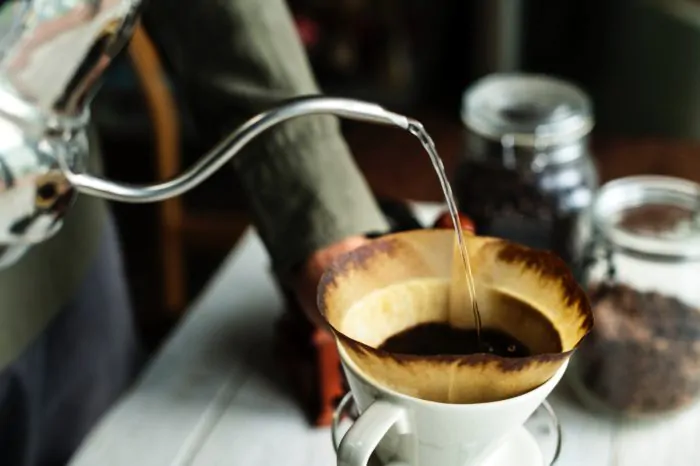
One most significant difference in making pour-over coffee compared to the drip machine is that with this method you can see and control all that is happening to your brew. It takes time, but as I learned through hit and trial, you will also develop a knack for things as you are through the process again and again.
Time To Buy One
It’s high time that now you buy one yourself and try brewing your coffee with your very own pour-over coffee brewer. Buying the first pour over coffee maker isn’t a difficult decision; moreover, it won’t make a hole in your pocket.
If I were to decide on selecting my first ever pour over coffee maker, I would go for “Kalita Wave 185 on Amazon.com” or Chemex (Detailed Review).
Kalita Wave 185 Pour Over Coffee Maker
It’s a very famous Japanese pour over coffee maker and one of their best. This beautiful piece got made from stainless steel and when using it gets fit straightway on our coffee mug, and I get full fresh brewed coffee.
It can easily brew almost ten full cups of coffee. It’s Kalita’s wave design style due to which the filter stays away from sticking and in the end cleaning up is also simple.
After using it, I came to know that Kalita 185 is also available in glass and ceramic. So, if you decide to buy it you will get two more options, select which suits you best. Maybe this is the reason it gets suggested to all first-time buyers.
How To Use It
It has three holes in its bottom, making it super easy to use again and again. To start, place Kalita wave 185 on top of your favorite coffee mug, to it add coffee grounds and the filter, then pour some water over it. Now relax, as now you don’t need to do anything, your Kalita will brew it fresh for you.
After you have enjoyed your freshly brewed coffee, don’t forget to clean it up, and trust me it’s effortless. All you got to do is remove the filter and rinse thoroughly.
I think buying Kalita Wave 185 Pour Over Coffee Maker will be a right decision when it is your first time. It’s effortless to use and clean.
9 Common mistakes To Avoid While Brewing Pour Over Coffee
1. Using water which isn’t hot enough
When using a drip brewer, be very careful about temperature. As nowadays there are many brewers available in the market that fail to reach the perfect temperature required for making a good coffee.
Temperature around 195°F(91°C) to 205°F (96°C) is ideal. At this temperature water can extract the best flavor from the coffee beans.
So, if you too are making this mistake try switching to a pour over brewer, in which just boiled water gets poured over the coffee beans. And the best part is that pour over brewer comes at a very reasonable price as compared to an electric brewer.
2. Using beans that were ground a long time ago
Buying beans that were grounded long ago, like the ones we buy from some supermarket, is a big no. Studies have proved that once the coffee beans get powdered, they start releasing their typical flavors. So, if we wait for long to use them, we lose their characteristic flavor.
For this, we can either grind our coffee beans at home or get them freshly grounded from a grocery aisle. Buying a good quality grinder can also solve this problem.
3. Pouring into a cold cup
Have you ever tried pouring your hot soup in a cold glass which you just took out from the refrigerator, you will end up drinking a cold soup? So, to relish your coffee for a long time, try drinking it in a warm cup.
Before pouring your coffee into the cup warm it for a minute in a microwave or keep it in warm water till your coffee is brewing. One can also try rinsing the pour-over coffee brewer or French Press with some warm water just before starting the brewing process.
4: Using the wrong coffee cup
When we have guests at home, mostly we serve coffee in the evergreen Corelle or china teacups. No doubt they are very elegant, but at the same time, they make coffee go cold very fast. To avoid this embarrassment, try using a thick or a heavy-walled cup, to let your guests enjoy a steaming coffee.
In your next trip to a departmental store, try looking for a thick-walled white coffee mug. Even a handmade ceramic mug will do as its thick walled.
5. Buying outdated coffee beans
If using old coffee beans, apparently you will be drinking substandard coffee. So never forget to check for the roasting date. The right online sellers always give this important info along with their products.
Instead, if you opt to buy the coffee beans from your local grocery store, make sure to see the date that is usually stamped on the packet.
6. Eyeballing the measurements
If you are one with the habit to pour the coffee powder in the brewing filter by estimation, then you will not be able to get the best-tasting coffee. It is always better to weigh the coffee powder carefully on a digital scale before use.
As a rule of thumb, use 7-8 teaspoon coffee powder for one full French press with a 34-ounce capacity. It will make your coffee bold and strong.
7. Not using good quality milk and sugar
Though the taste you like is your personal choice, there is no harm in using the best materials especially sugar and milk. Try using brown raw sugar.
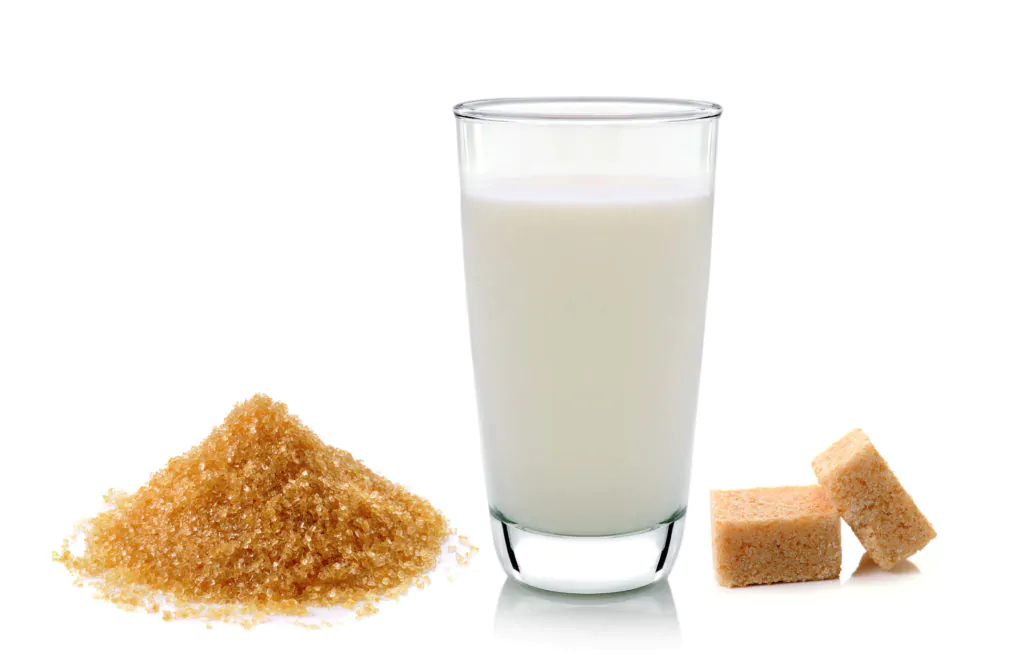
While choosing milk, take the whole milk. Avoid using non-fat milk as it will lighten your coffee.
8. Not using correct coffee-to-water ratio
To get the best coffee taste, if you do not have a specific personal choice, do not add too much water. Take two tablespoons of coffee powder per coffee cup. If you add too much water, then the coffee taste will go weak.
9. Storing your coffee in the wrong place
If the coffee storage has humidity or too much light, it will have a deteriorating effect on coffee taste. Always store coffee beans/coffee powder in a container with an airtight lid. Storing coffee in the refrigerator is also wrong as it is humid there.
For more Common Mistakes: 32 COMMON MISTAKES WHEN BREWING COFFEE (USEFUL)
10 Tips for Brewing Pour Over Coffee
1. Always go for fresh beans!
I have experienced that coffee is best made within a few days of roasting the beans. I suggest not buying the bulk coffee beans from the super mall open display bins because, in open containers, the bright light and oxygen disturb the flavor of roasted beans.
Also, with prolonged use, the open display tubes get coated with oils that turn rancid with time if not cleaned regularly. It will also spoil the coffee taste.
I usually prefer to buy bulk beans only from stores that are selling them in vacuum-sealed packages. Else, one can also try to get the roasted beans from the nearby coffee store in quantities to suffice for a week or so.
2. Make sure to keep beans fresh!
If you are getting a good bargain, then no harm in buying the good quality coffee beans in bulk, but make sure that you store them in airtight containers to preserve the freshness. Avoid refrigerating the raw beans else they will absorb moisture and will go stale.
Also, roast the beans in small quantities to last for a week. Never store the ground coffee at freezing temperature, especially the one with dark roast.
3. Goes without saying – Choose the Good Coffee!
If you are stuck to the standard coffee brands, then I must say that you are missing some fun. Have you ever met a wine connoisseur? The coffee enthusiasts are no less.
If you are one, go for a source that clearly states the region, country, and the estate of the origin of coffee beans. You will be surprised, how much there is to know for you to be an expert to be able to choose the right coffee variety.
Primarily, there are two types of beans in the market: Arabica and Robusta. Arabica beans are more widely produced, and come with a broader range of flavors. If possible, look for 100% pure Arabica beans. Alternatively, if you like harsh flavors, try the Robusta grades that have high caffeine content.
If Arabica beans are called the good beans, Robusta will be the nasty boy in town.
4. Better have your grind!
Once you grind the coffee, the powder starts losing its oils and flavors almost instantly. I prefer to grind powder every time before brewing my coffee. While grinding make sure that the powder is uniform, the uneven powder will not give the right taste.
For this, I suggest you use the high-quality burr mills. If you do not have one, then you can also use the standard electric operated blade grinders.
Related Article: 15 WAYS TO MAINTAIN YOUR BURR GRINDER
5. Water quality is important
Avoid using tap water or water with high chlorine content. It can spoil the taste of your brew. I prefer to use the spring water or one that got treated with the activated charcoal filters.
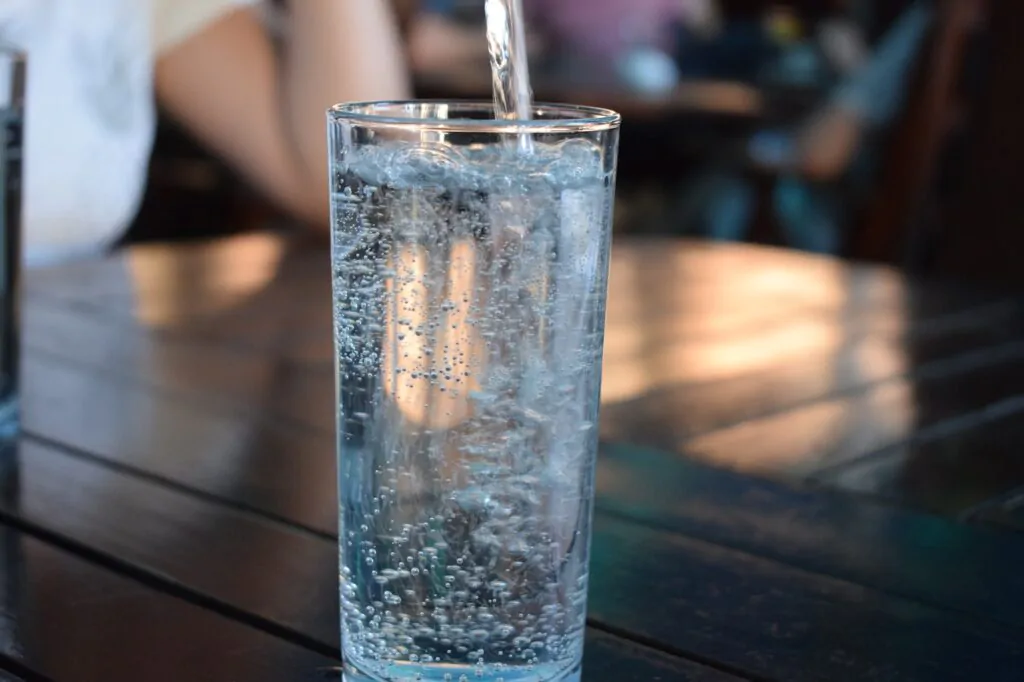
You will be surprised to know that the distilled water is also not a good choice as it is devoid of minerals that give taste to the brew.
6. Cheap filters means cheap coffee!
I prefer to use high-quality oxygen bleached paper filters from known brands. One can also go for long-life expensive gold-plated filters that give the best flavor. Avoid using cheap coffee filters.
Also, if using gold plated filters, do not grind the coffee too fine, else it will pass the sediments through it into the brew.
7. Be careful about the coffee quantity!
Many times, we merely add coffee powder by estimation, but this is not the right method. Instead, I always prefer to use a weighing scale, to add the coffee power to just the right amount. I usually prefer one part of coffee for 20 parts of water (means 7.5 to 8 gm coffee power for one 150 ml water). You may decide the right proportion as per your taste.
If you love the strong blend, go up to 1:14 or if you like the lighter brews can try up to 1:30. These portions are for Arabica Coffee. If you are using Robusta beans, that have higher caffeine content, then it will take some hit and trail to adjust the mistier to suit your best taste.
8. Don’t overwork the coffee
The standard measure for brewing coffee of proper strength is 2 level tablespoons per 6-ounce cup or about 2 3/4 tablespoons per 8-ounce cup. Tricks like using less coffee and hotter water to extract more cups per pound tend to make for bitter brews.
I usually prefer two tablespoons of coffee powder in the filter for the 6-ounce cup. Never try to use less coffee with boiling water to have a maximum extraction. This method will extract more harsh flavors, and you will have a bitter brew.
9. Avoid high heat!
From my experience; I can say that water heated up to 95°C-97°C gives the best brew. Else once you attain the full boil, pour water after about 45 seconds. This way you will get the right water temperature.
Too hot water extracts more of bitter compounds thereby adversely affecting the coffee taste. Also, once brewed, avoid using the coffee powder again.
10. Cleanliness matters!
Clean storage containers and grinders every few weeks to remove any oily build-up. At least monthly, run a strong solution of vinegar or specialty coffee equipment cleaner (e.g., Urnex) through your coffeemaker to dissolve away any mineral deposits. Rinse thoroughly before reuse.
There is no better way to make the right coffee, then keeping your equipment, cups, coffee storage container neat and clean. I prefer to clean my grinder thoroughly once in 2 weeks. It also helps to clean once a month your coffee maker, blender, etc. with vinegar.
It will remove all the oil and mineral deposits and will improve the taste of the brew.
FAQS about Brewing Pour Over Coffee
What are the factors On which the quality of coffee depends?
The quality of a brew depends on the following major factors:
*Elapsed time since bean grinding.
*Elapsed time since bean roasting.
*The quality of coffee beans.
*The quality and taste of the water used.
How do arabica and robusta differ?
These are two different species of coffee. The general difference is in taste and the way they are produced. Arabica has different flavors varying from sweet to tangy. Robusta tastes from harsh to neutral.
What is the quantity of ground coffee required for x amount of coffee?
I suggest about a 1:15-17, coffee to water weight ratio. A cup of 6 ounce water will produce 5.33 ounce of coffee and for this 10 gram of coffee powder is required.
What is the right temperature to brew coffee?
The ideal temperature of water for brewing normally roasted coffee beans is from 195°F(91°C) to 205°F (96°C).
What are the different methods to make coffee?
The commonly used methods to make coffee are:
* Using French Press (French Presss Guides for Begineers)
* Drip or Pour Over Method
* Espresso Coffee
* Aeropress (See Review)
* Stovetop Moka Pot
* Siphon
Can Coffee Beans Be Blended Together?
Yes, you can do that. Most of the readymade coffee powders in the market are actually a blend of different type of beans. You can also experiment to create your mix and thus brew unique flavor unlike any other one can find.
Can I Brew Flavored Coffee Through The Same Brew Funnel That I Use To Brew Regular Coffee?
No this will not be a good thing to do. It is best to use a different coffee filter while making flavored coffee. If you still insist on doing that, the regular coffee will have the remnant taste of the flavored coffee.
If you have to do it for some reason, make sure that the filter basket is thoroughly cleaned after brewing the flavored coffee before making the normal one.
Brew Pour Over Coffee: The Final Word
The method of brewing coffee with a pour-over brewer is simple as this doesn’t involve any high-end electrical gadget; for which you need to check its manual time and again.
Still, the cup of coffee you get from this method has all the qualities which one wants like freshness and superb taste. A simple method of coffee brewing, which will make you try it again and again.
